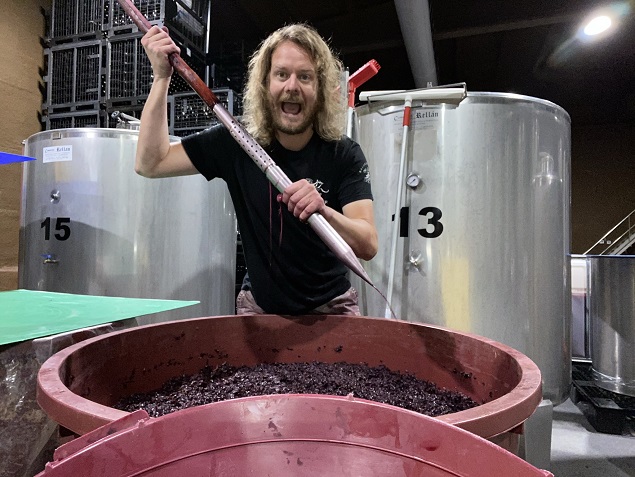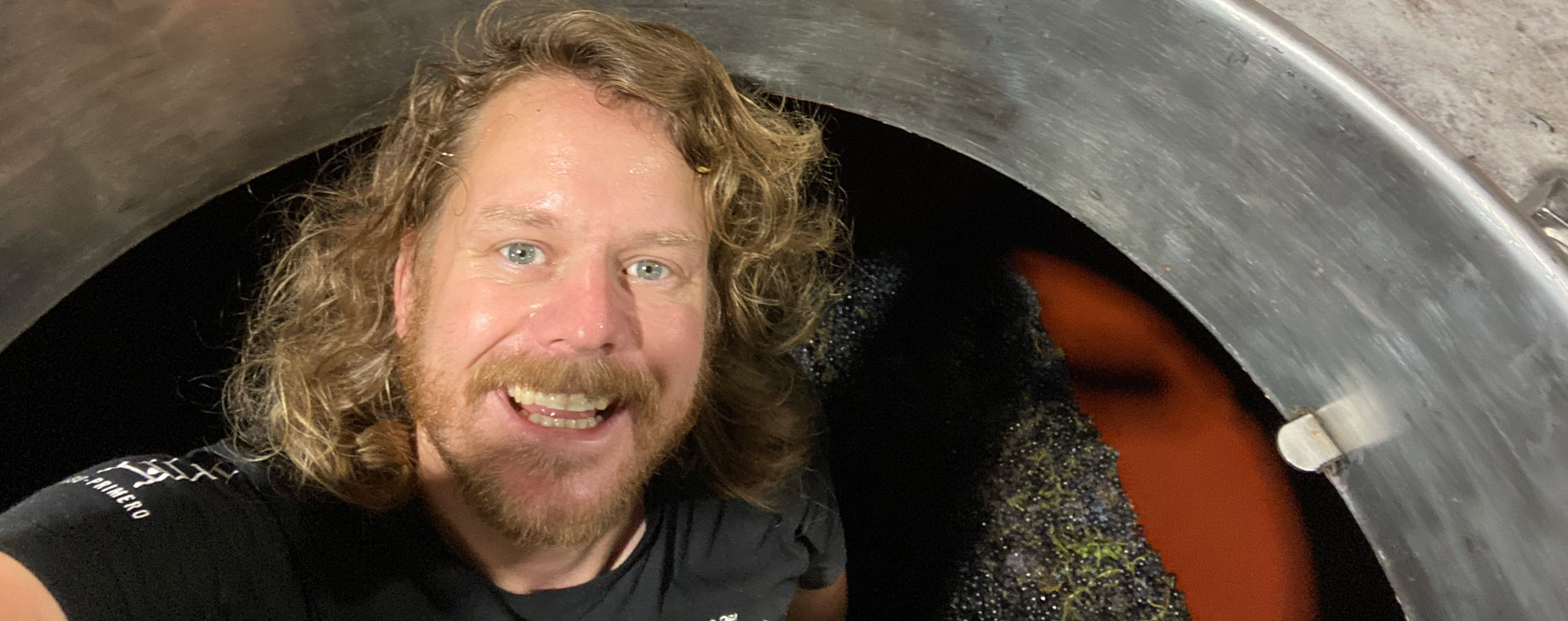‘Being unfashionable can be the most fashionable thing in the world’I want to tell you how we created our Paso-Primero Rosado.
It’s a cautionary tale about the dangers of preconceived ideas and forcing wines into existence. It’s about failures, and the damage you can cause by not taking time to understand those failures. But it’s also about unexpected redemption, the power of finding your voice, and realising that sometimes, being unfashionable can be the most fashionable thing in the world.

I should probably explain who I am. My name is Tom Holt. I’m the winemaker for Paso-Primero and an Englishman trying to navigate the world of wine from a base just south of the Spanish Pyrenees. After a decade of selling and making other people's wine, it’s here, in a region called Somontano, that I set about creating my own wine business.
Too poor for my own winery, too enthusiastic to carry on working for someone else, I took the unusual route of borrowing my way to the top. I found a parent winery willing to take a chance on me, used their kit, used their infrastructure, used their knowledge, and stood on their shoulders to launch my own brand into the world.
In 2015 that meant one wine: Paso-Primero Tinto. And for us, it was a huge success. We might have only been responsible for 0.045% of the wine sold in the UK that year, but that meant we had sold out of our first wine in less than six months. Half a year ahead of schedule. We were up and running.
The first vintage was followed by another, with Paso-Primero Blanco quickly added to the portfolio. We kept hitting our numbers and our little corner of the wine world grew. In 2017 we started getting requests for a rosé. And this is where our story really starts.
‘As soon as that wine finished fermentation, it fell apart’When we first debated the idea of making a pink wine, I was 100% influenced by the Instagram world of wine marketing. I was convinced that to be a success, and to have any winemaking merit, a rosé had to be like the ones from Provence: bright, light, and Instagrammable. So that’s what we tried to make. Our version of a Provence rosé.
It started brilliantly. We had amazing juice, a lovely colour, pretty aromatics, the works. It was fun and fruity, and expressive, and everything we’d set out to make. But then the wine gods turned against us. As soon as that wine finished fermentation, it fell apart. No aroma, no body, no fruit. Nothing. All that was left was a nice colour and even that was fading.
Failure at any point is devastating but with the annual timescale of wine production, the pain of ‘losing’ a wine is difficult to take. From lost sales to missed opportunities, you’re reminded of the loss almost daily for an entire year. Do it twice and you’re suffering for even longer. Which is exactly what we did.

It seems funny to say it now but despite losing the 2017, I was still convinced we had to make a pale rosé in 2018. Perhaps more pertinently, I was still convinced it was possible. It’s hard to remember exactly but I must have believed the first failure was an aberration. Chalked it up to poor processing, an unclean tank, or maybe even bad luck. Whatever the thought process was, we made some basic plans to rectify where we thought we’d gone wrong, but mostly we stuck to our guns.
Quick press, light extraction, cool juice, gentle settling, commercial yeast strain, slow ferment. We certainly weren’t ripping up the rule book. We did at least have a few new tricks up our sleeves. We delayed ferment to accommodate a cleaner rack, spent more time working lees using a tiny pump to circulate them. We tried some pick variations and blended different juices prior to ferment, but all the efforts were for nothing.
Once again, we had a lovely coloured tank of rubbish.
‘I figured we’d find the answer by drinking more wine’
What were we doing wrong?
As with all problems in my winemaking life, I figured we’d find the answer by drinking more wine. A challenge was set. Find out who’s making the best rosé and how. In the build-up to the 2019 harvest, I bought a collection of the best-selling pink wines in the UK and the team in Spain bought a collection of the best-selling pink wines from Spain. We lugged them up into the Pyrenees and started drinking.
What we discovered was the people making Provence-style rosé in Provence, were making great wines. The people making Provence-style rosés outside of Provence, not so much. And the people making rosé wines true to their region, were making even better rosés.
It was a eureka moment. We finally realised that trying to make the grapes fit a wine was the exact opposite thing we should have been doing. For the first time, we set about making a rosé entirely by taste. A rosé that was unashamedly from Somontano and not built for our social media feed.

The result? A 14.5% rosado (not a rosé!) that would give the colour of Ribena a run for its money. Big, bold, and uncompromising. About as far removed from the ubiquitous glass of Provence in a lavender field as you can get. But as well as the rich colour (and hefty alcohol content), it had the bombastic cherry flavour profile we desperately wanted, the sweet ripe strawberry aroma we wanted, and the fun drinkability we want in all our wines. It was surprisingly accessible and quintessentially Somontano. We’d discovered what we should have been making all along. The question now was can we sell it?
I loved it but I was nervous. And I was prepared for this to be the first and last Paso-Primero Rosado. I’ve never been more wrong. Against all the odds, despite being criminally unfashionable, and having a depressingly inauspicious launch in December 2019, it became one of our most beloved wines. (Thanks to the combination of a global pandemic, a very warm spring and the wine’s ability to pair with barbecue food. But that’s a whole other story and I want to try to explain what happened to that wine.)
How does a rosé fail?
I’m not sure we’ll ever know definitively what happened, but our theory is that the wines were never going to succeed in the first place and the early signs of hope were nothing more than pre-emptive echoes of what the wine should have been all along.In the years since 2019, together with our parent winery, we have farmed organically and regeneratively, re-established indigenous varieties, hand-harvested, and created a bespoke winery specifically for making ‘modern’ wines.
But none of that was available to us for those first years of production. We were begging, stealing, and borrowing, and so were our parent winery. We had inexplicably entered into a three-tiered structure where any number of operations were reliant on three different schedules, three different approaches, and three different levels of importance. The early years were not years for idealism or idiosyncrasies. It was broad-stroke winemaking. And that meant machine-harvesting very ripe, international varieties in the peak of the Spanish sunshine.
Not great for any form of quality wine production and for the grapes destined for rosé, it was a death sentence. The fruit we were receiving at the winery was overly ripe and hot. There was a lot of stress on the grapes from picking too, so we had a ridiculously high degree of extraction in the trailer. To try to draw a pale juice out of this quagmire meant taking as much volume as we could, as quickly as we could. Colour was the only driver for any decision-making. Everything was designed to have a tank of pale juice with almost no regard for variety, flavour or aromatic profiles.
‘We never respected our core ingredient’And this is where we think everything fell apart. We never respected our core ingredient. We were working with big varieties (Merlot, Syrah, and Tempranillo), in a hot climate, making endless compromises to process them, and trying to make something unfeasibly elegant.
We started with pretty juice, but we missed out on the key structural components that allow that prettiness to stay. There was nothing for the aromatics to hang on. There was no core for the fruit flavours to build on. It was hollow and as soon as fermentation took away the sugar, that emptiness was front and centre.
In 2019 we were still three years away from having total control of our winemaking, but we had at least started to learn our lesson. Instead of focussing on not extracting colour, we were patient, and took the juice that matched the taste profile we wanted. It meant accepting our fate and embracing our natural colour spectrum but by doing so, we took more structure from the grape and gave our flavour profile a place to thrive. Sure, we weren’t making the rosé I’d set out to make in 2017, but we were finally making the rosado we should have been making all along.













.png)






